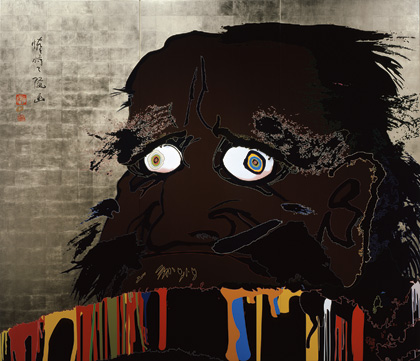
Departing from his well-known utopian and dystopian themes—which feature masses of smiling flowers, elaborate scenes of toonish apocalypse, and the ever-morphing cult figures of DOB and Mr. Pointy—Japan’s most popular contemporary artist, Takashi Murakami, is surprising audiences with a series of monumental portraits of Daruma (Sanskrit, Bodhidharma), the legendary first patriarch of Zen Buddhism. Daruma was an Indian sage who lived during the fifth or sixth century C.E. and is said to have attained enlightenment after sitting in meditation before the wall of the Shaolin monastery for nine years. Legend has it that he cut off his eyelids so that he would not fall asleep and that he allowed his arms and legs to wither and fall off. In today’s Japan, Daruma’s popularity as the embodiment of resilience and determination has given rise to a thriving market: good- luck charms, in the form of armless, legless, and eyeless dolls, appear for sale in endless variations. Murakami’s interpretations of the icon are also widely varied, fusing tradition with a range of artistic and cultural inspirations.
The Museum of Contemporary Art in Los Angeles is currently preparing a exhibition of Murakami’s work that will open later this year and subsequently travel to the East Coast.
Adapted from text provided by Gagosian Gallery in New York City, which exhibited Murakami’s new work this spring